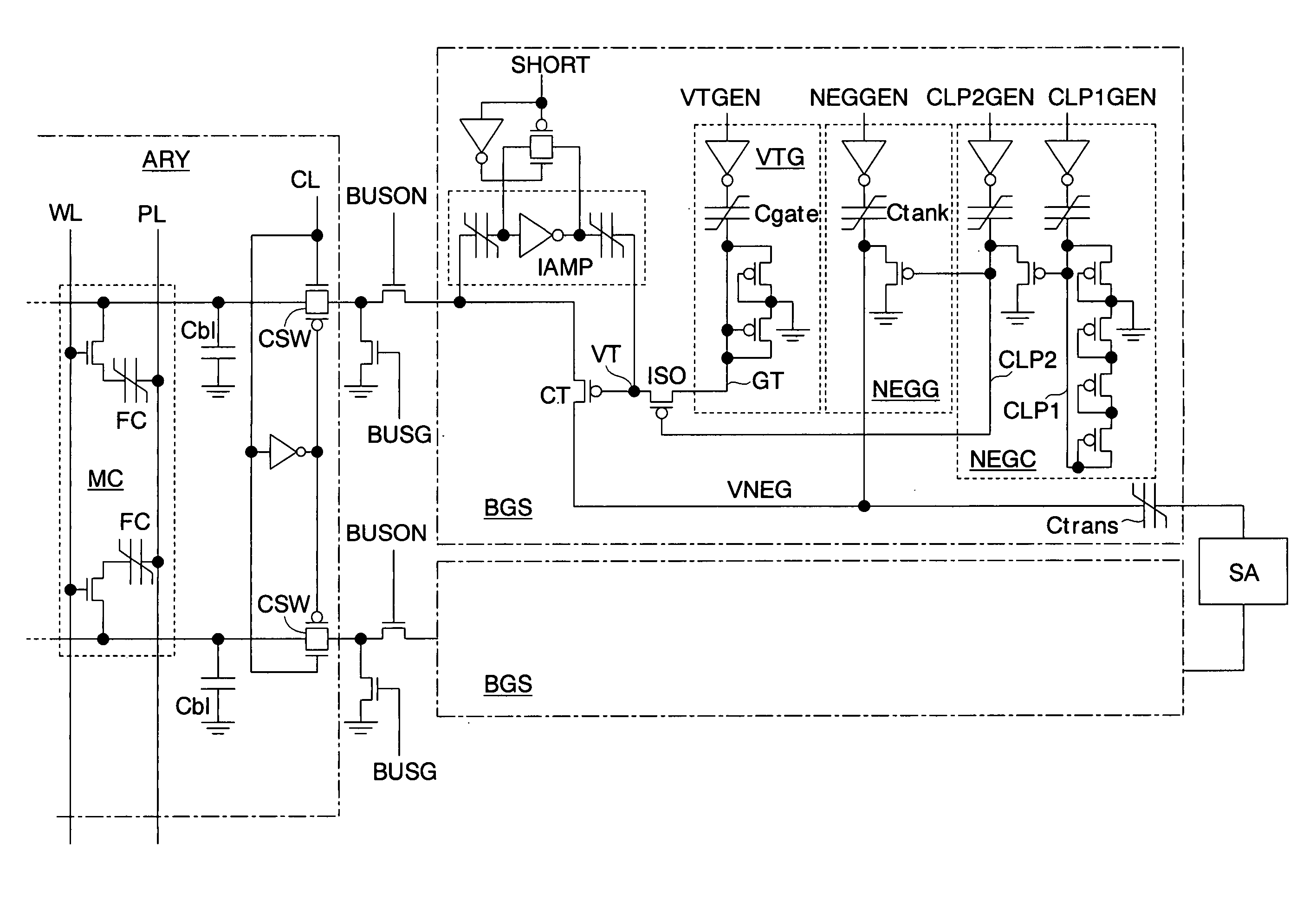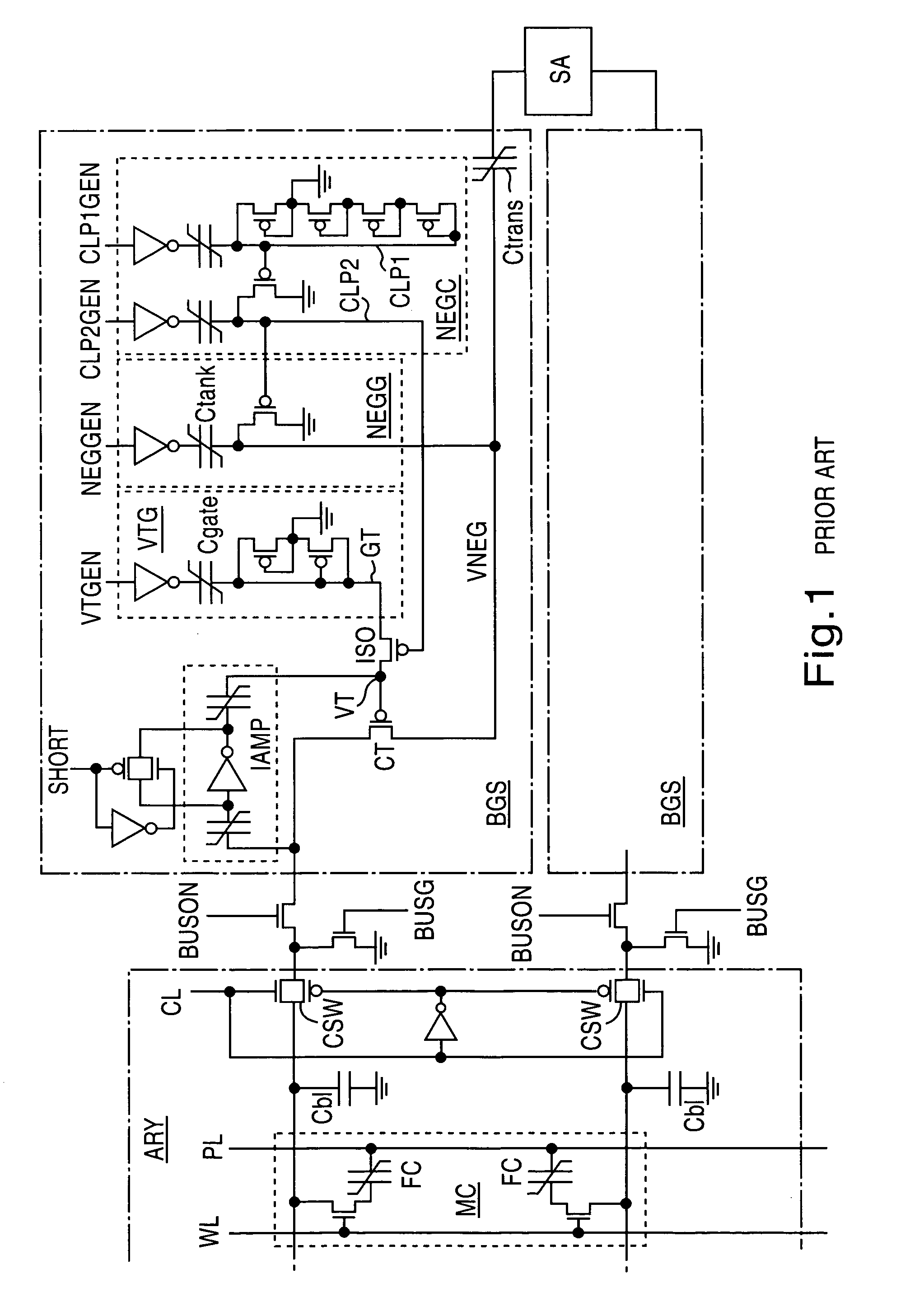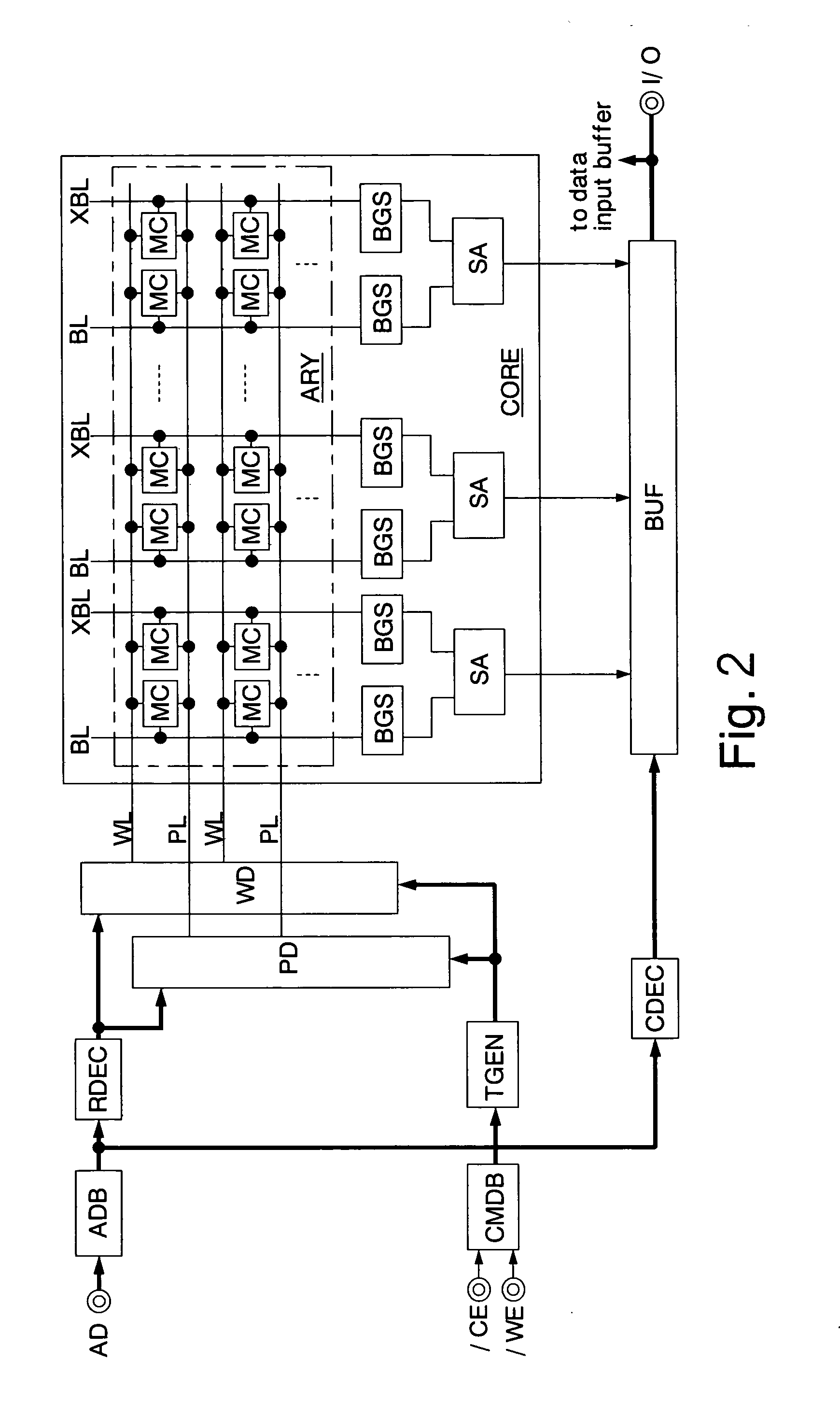Ferroelectric memory and data reading method for same
a technology of ferroelectric memory and data reading, applied in the field of ferroelectric memory, can solve the problems of reducing the power consumption of ferroelectric memory, affecting the ability of the first node to be read, and the period is an obstruction to shorten the read access time. , to achieve the effect of reducing the layout size reducing the power consumption of the ferroelectric memory, and increasing the potential of the first nod
- Summary
- Abstract
- Description
- Claims
- Application Information
AI Technical Summary
Benefits of technology
Problems solved by technology
Method used
Image
Examples
first embodiment
[0040]FIG. 2 shows a ferroelectric memory according to the invention. A ferroelectric memory chip is formed on a silicon substrate by using a CMOS process.
[0041]For example, the ferroelectric memory is used as a work memory of a hand-held terminal such as a cellular phone. The ferroelectric memory has an address buffer ADB, a command buffer CMDB, a row decoder RDEC, a timing generator TGEN, a column decoder CDEC, a plate driver PD, a word driver WD, a memory core CORE, and a data output buffer BUF. FIG. 2 mainly shows circuits that are necessary for a read operation. Therefore, circuits necessary for a write operation such as a data input buffer and a write amplifier are omitted.
[0042]The address buffer ADB receives an address signal via an address terminal and outputs the received signal to the row decoder RDEC and the column decoder CDEC. The row decoder RDEC generates a row decoded signal by decoding upper bits (row address) of the address signal and outputs the generated signal ...
second embodiment
[0100]FIG. 9 shows a read operation of the Waveforms shown in the top part of FIG. 9 are input signals and waveforms shown in the bottom part of FIG. 9 are simulation results.
[0101]The timing relationships between the input signals are the same as in the first embodiment. As for the simulation waveforms, the voltages of the nodes SF and XSF are slightly different than in the first embodiment, which results from the difference in the cell structure (1T1C or 2T2C). Symbols with “ref” at the tail denote waveforms of nodes corresponding to the reference memory cell RMC. The voltage of a node that is denoted by a symbol with “ref” is equal to the middle value between the voltages of the associated nodes that are denoted by symbols with “1” and “0,” respectively. As is apparent from FIG. 9, the simulation waveforms are basically the same as in the first embodiment.
[0102]This embodiment can provide the same advantages as the first embodiment does.
[0103]Although the above embodiments are s...
PUM
 Login to View More
Login to View More Abstract
Description
Claims
Application Information
 Login to View More
Login to View More - R&D
- Intellectual Property
- Life Sciences
- Materials
- Tech Scout
- Unparalleled Data Quality
- Higher Quality Content
- 60% Fewer Hallucinations
Browse by: Latest US Patents, China's latest patents, Technical Efficacy Thesaurus, Application Domain, Technology Topic, Popular Technical Reports.
© 2025 PatSnap. All rights reserved.Legal|Privacy policy|Modern Slavery Act Transparency Statement|Sitemap|About US| Contact US: help@patsnap.com



